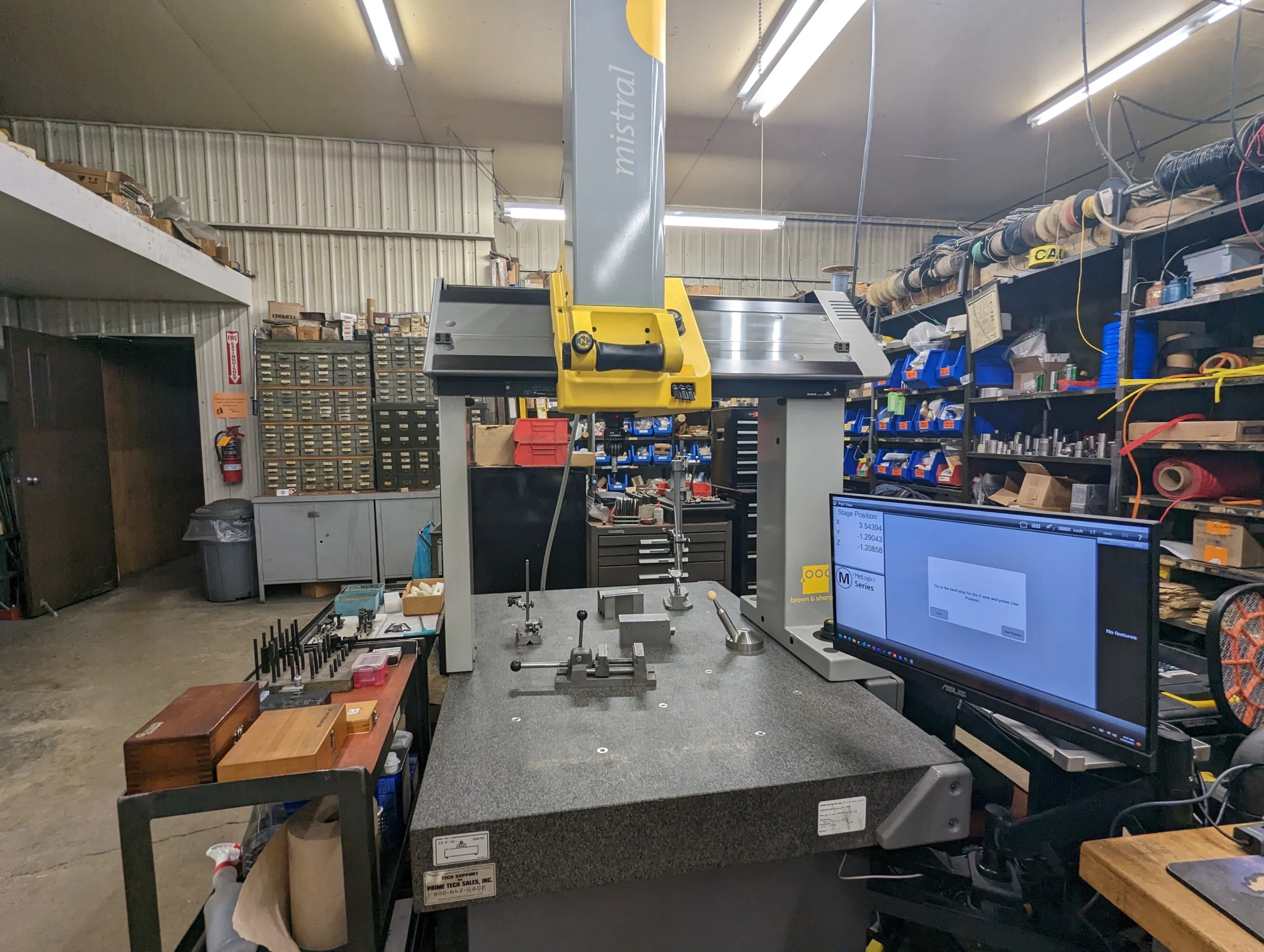Quality Inspection
Quality inspection is a critical process that ensures every manufactured part meets specific standards of precision and accuracy, adhering to the required specifications. This process involves a thorough examination of the parts using a variety of precision measuring tools and instruments to verify dimensions, alignments, and surface quality. Nothing leaves this building before being properly inspected.
Key tools used in quality inspection include:
- Brown and Sharpe CMM (Coordinate Measuring Machine): A sophisticated device that measures the geometry of physical parts using a probe. It provides precise measurements of objects in three dimensions and is essential for verifying complex geometries and tight tolerances.
- Mitutoyo Micrometers: A range of high-precision micrometers used for different measurement needs. This includes:
- Surface Micrometers for measuring distances between planes
- Depth Micrometers for depth measurements,
- Pin Micrometers for measuring pin or rod diameters,
- Disc Micrometers for measuring the thickness of discs or gaps,
- Pitch Micrometers for measuring the pitch of threads.
- Mitutoyo Calipers: Versatile tools for measuring the distance between two opposite sides of a part. They can measure internal and external dimensions as well as depths.
- Gage Blocks: Precision ground and lapped measuring standards used to calibrate other measuring equipment and for comparative measurements.
- Pin Gages: Cylindrical, precision-ground pins used to measure hole sizes and distances between holes.
- Thread Gages: Tools for checking the correctness of thread size and pitch in nuts and bolt holes.
- Ring Gages: Used for comparative gauging as well as for checking, calibrating, or setting gauges and micrometers.
- Test Indicators: Small, precise instruments for comparative measurements, especially useful for checking run-out or alignment of parts.
- Surface Plates: Flat, rigid surfaces used as a baseline for inspection and for supporting other inspection tools. They provide a true plane for checking flatness and for scribing.
- Surface Gages: Instruments used to check the surface finish or the surface texture of materials.
- Optical Comparator: Instrument used to magnify and project the profile of a part onto a screen for precise dimensional and angular measurements against a prescribed standard.
equipment

